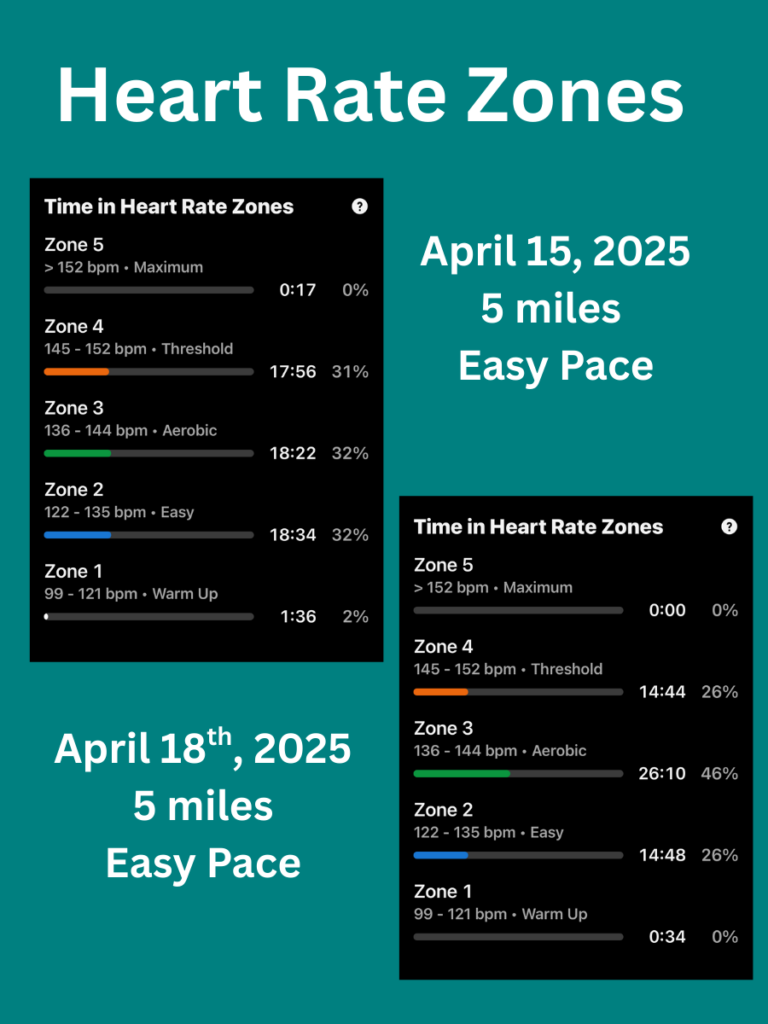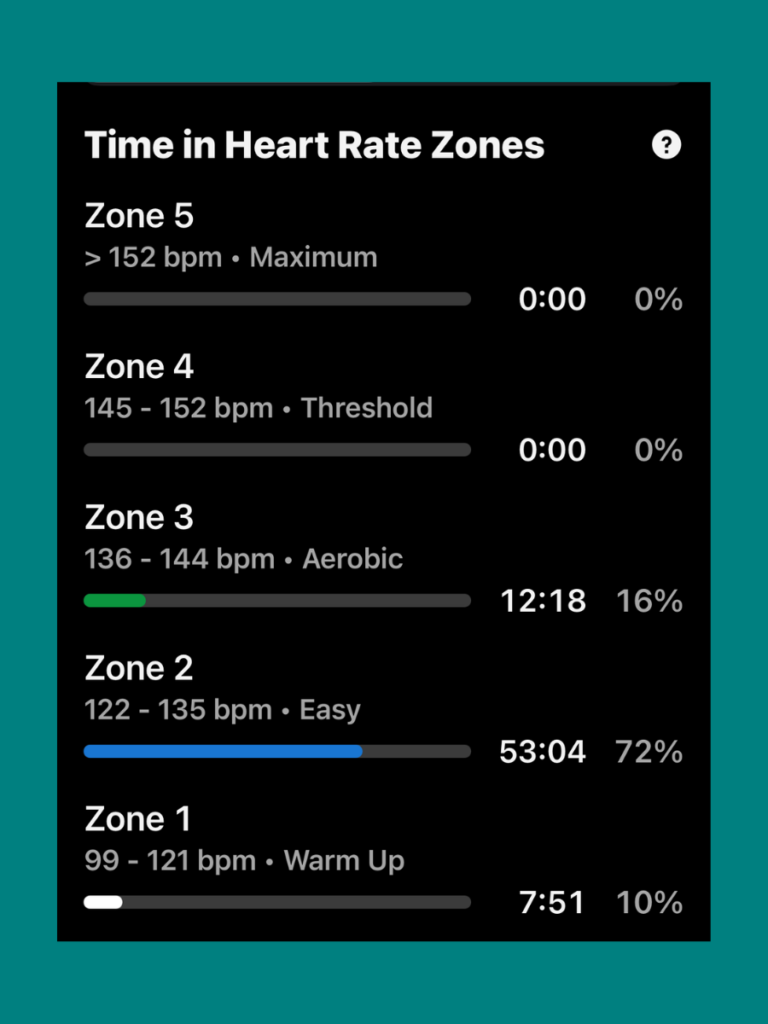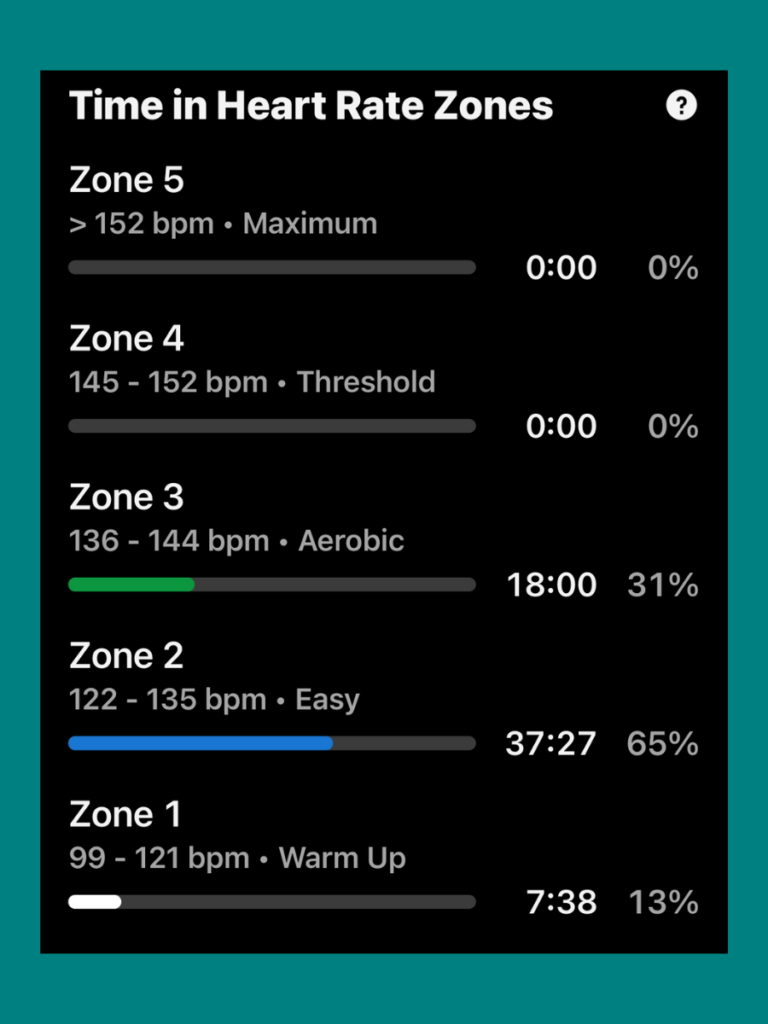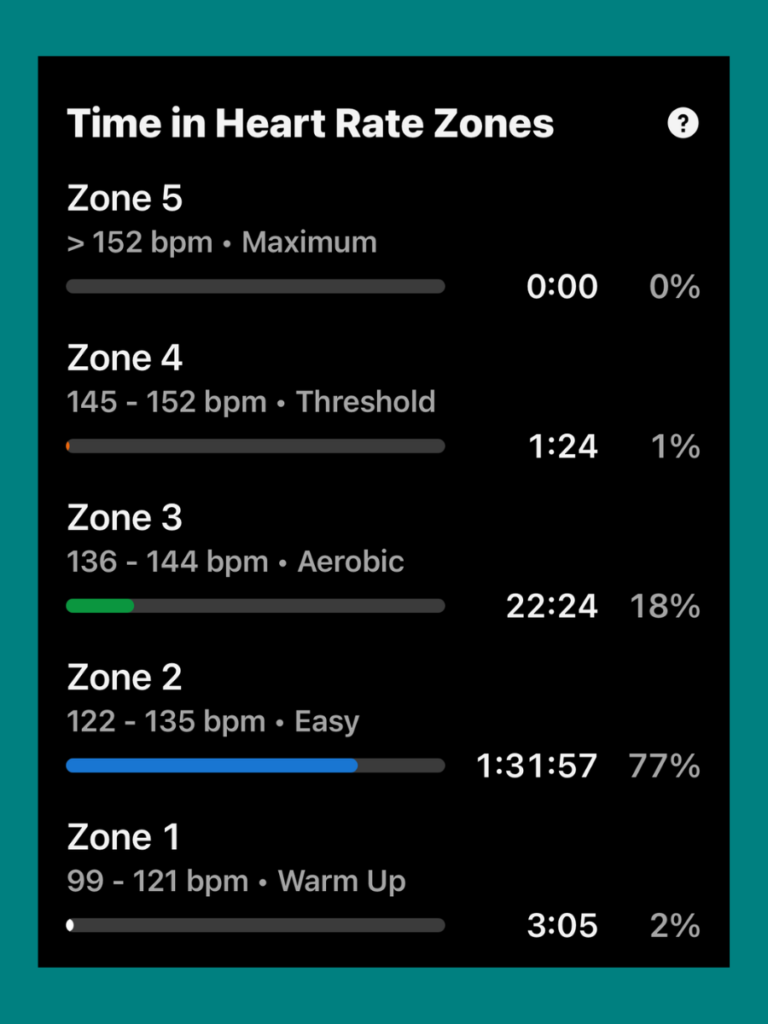Heart rate training and running in specific heart rate zones have been around for many years. These zones are a method for measuring the intensity of a run. For more detailed information, click here. I don’t usually pay that much attention to what zone I am running in. They don’t seem to work for me, at least that is what I tell myself. Even though I start in zone 2, I tend to spend too much time in zone 3 or higher for most of my easy runs, even though I feel like I’m running at an easy pace. These easy runs should be done at a zone 2 pace. I am considering revisiting this tool because I wonder if I am overtraining, which could be a contributing factor to not reaching my running goals.
As we all know, I did not perform well in my last marathon, and since returning to marathon training, I have been feeling exhausted and irritable after my runs. Not only that, my quads and knees ache more than usual. I reach the last mile or two of my run, and I’m not sure I can even finish it. I am not running that fast, well, at least not that much faster. Although, as I mentioned, I tend to hang out in zone 3-4 even on easy days.

Last week, I decided to attempt to run my easy days in zone 2. If I follow the formulas for calculating heart rate zones mentioned in the previous post, referenced above, my heart rate would be around 100 for my easy pace. However, Garmin has collected data from previous runs and determined that my heart rate in zone 2 should be between 122 and 133 beats per minute. Truly, if I ran any slower, I would be crawling.
On Tuesday, I was scheduled for an easy 6 miles. I ran those miles on a hilly route, so I had to slow it down significantly to keep my heart rate in Zone 2. I was running 2-2.5 minutes per mile slower than marathon pace. Making an effort made a difference. But will this really help me run faster?

I had a speed workout on Wednesday and then another easy 5-mile run on Friday. This run was on a much flatter course with the first half slightly downhill and the second half, of course, slightly uphill.

I was surprised to find that I spent 31% of my time in zone 3. I honestly didn’t feel like I was running that fast. However, I suppose a flatter course with a slight downhill slope can make it easier to run a little faster without feeling like you are working harder. I was running at an average of 1-1.5 minutes per mile, slower than marathon pace.
And then, my long run of 10 miles on Saturday was run along a varied trail of flat to rolling hills. Being frustrated by running so slow, and although improving in terms of staying in zone 2, I was still occasionally hitting zone 3. I was running so slow, I couldn’t imagine how that could even be possible. For the long run, I decided to go easy based on perceived effort. And although I didn’t pay close attention to the pace, I still checked my heart rate occasionally, but I didn’t freak out if it wasn’t in zone 2. I just monitored my breathing and made sure I was running at an easy pace. My pace ended up being about 1.5-2.0 minutes per mile slower than marathon pace. For comparison, my pace in the previous week’s runs was 0.5-1.5 minutes per mile slower than marathon pace.

I thought this run went well, and I mainly stayed in zone 2. I believe zone 3 occurred when running up some of those hills. I felt good afterwards and didn’t bonk on the run.
The reason this is so stressful for me is that I don’t feel like I’m getting any faster. And having to slow it down even more makes me think that won’t help. Intellectually, I know that it will. I have read extensively about it from various sources, and the 80/20 rule—80% easy, 20% hard—has been proven to be effective. When putting it into practice, though, it doesn’t FEEL possible.
Yet by slowing the runs down, I was able to finish them and feel like I could keep going. My quads did not ache at all, but my knees still bothered me a little. I have bilateral knee arthritis, and I think running in a higher stack shoe, along with a higher heel drop, isn’t helping (a topic for another time). I plan to continue using the zone method for now and monitor its progress. My training is about to ramp up in the next few weeks, so this may be the best way for me to increase my mileage and complete the runs, including the speed sessions, without feeling beat up.
I must admit that I felt better during the run and after by slowing down the easy runs. I’ll keep you updated on how this is working.
Leave a Reply